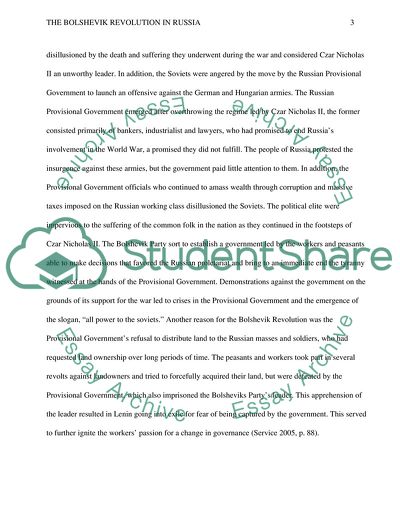Cite this document
(The Bolshevik Revolution in Russia Essay Example | Topics and Well Written Essays - 2000 words, n.d.)
The Bolshevik Revolution in Russia Essay Example | Topics and Well Written Essays - 2000 words. https://studentshare.org/history/1762937-bolshevik-revolution-in-russia-the-main-reasons-and-results
The Bolshevik Revolution in Russia Essay Example | Topics and Well Written Essays - 2000 words. https://studentshare.org/history/1762937-bolshevik-revolution-in-russia-the-main-reasons-and-results
(The Bolshevik Revolution in Russia Essay Example | Topics and Well Written Essays - 2000 Words)
The Bolshevik Revolution in Russia Essay Example | Topics and Well Written Essays - 2000 Words. https://studentshare.org/history/1762937-bolshevik-revolution-in-russia-the-main-reasons-and-results.
The Bolshevik Revolution in Russia Essay Example | Topics and Well Written Essays - 2000 Words. https://studentshare.org/history/1762937-bolshevik-revolution-in-russia-the-main-reasons-and-results.
“The Bolshevik Revolution in Russia Essay Example | Topics and Well Written Essays - 2000 Words”. https://studentshare.org/history/1762937-bolshevik-revolution-in-russia-the-main-reasons-and-results.


